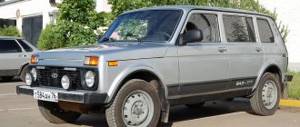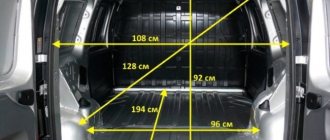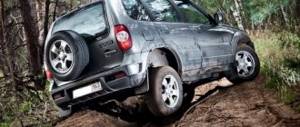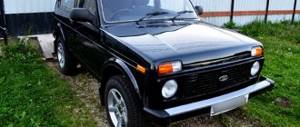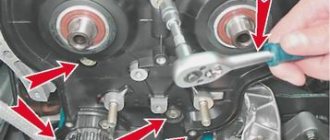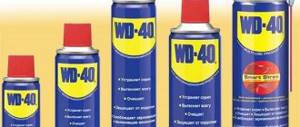ZIL-131 is a truck produced by the Likhachev Moscow Automobile Plant. This model was considered the main one for the enterprise and replaced the ZIL-157, which was popular at that time. The car was especially in demand in the Soviet Army. The car had an all-wheel drive, front-engine layout and a six-by-six wheel arrangement. This design allowed the car to move in areas where other vehicles could not pass.
Production of the ZIL-131 lasted from 1966 to 1986, after which an improved version (ZIL-131N) was released, which received a wider range of engines.
The model was subjected to various transformations several times. However, the changes were minor. In 1994, the Likhachev plant stopped producing the car. However, production of the truck continued at the Ural Motor Plant. Here the ZIL-131N was removed from the production line only in 2002, replaced by the more advanced ZIL-433420. Also at the Ural Automotive Plant, production of the AMUR-521320 model began, which became a complete analogue of the ZIL-131N. The production of this modification continues to this day.
Video
The Likhachev plant produced many modifications of the model. Among them:
- ZIL-131 – basic modification, production of which lasted from 1967 to 1986;
- ZIL-131A is a version with unshielded electrical equipment migrated from the ZIL-130. Its differences from the basic version were the absence of special military equipment, a middle bench in the body and a searchlight. Production of the car ended in 1971;
- ZIL-131V is a truck tractor built on the basis of the ZIL-131. The car had 2 spare wheels, a shortened frame and a fifth wheel coupling. The car was used to transport goods together with a semi-trailer weighing 12,000 kg (on dirt roads - 10,000 kg). Produced from 1968 to 1986;
- ZIL-131D – experimental chassis for dump trucks;
- ZIL-131D is a model with the same name and a Caterpillar engine, created in 1992. Its production lasted 2 years;
- ZIL-131N is a modernized version of the basic model. The main differences: a new ZIL-5081 engine, an increased service life (250 thousand km), an awning made of synthetic material and improved optics. Production of the ZIL-131N ended in 1987;
- ZIL-131NA – analogue of ZIL-131N with unshielded electrical equipment;
- ZIL-131NV – truck tractor with an improved platform;
- ZIL-131N1 – modification with a 105-horsepower diesel unit “D-245.20”;
- ZIL-131N2 – version with a 132-horsepower diesel unit “ZIL-0550”;
- ZIL -131S and ZIL -131AS are northern versions. These models were equipped with a cabin with an autonomous heater, frost-resistant rubber products, additional thermal insulation, fog lights, battery insulation and double glass. Cars were used in temperatures down to -60 degrees;
- ZIL-131NS, ZIL-131NAS and ZIL-131NVS - improved versions in the northern version;
- ZIL-131X - model for desert and hot areas;
- ZIL-131-137B – road train.
Description ZIL-131
Before studying the fuel consumption of the ZIL 131 and other characteristics of the car, it is advisable to familiarize yourself in more detail with the history of its creation and the features of the model. This truck has a three-axle design and differs from most analogues in its high level of maneuverability. Thanks to its reliability and unpretentiousness, it was widely used by the Soviet armed forces.
Mass production of the model continued from 1966, when it was first designed, until 1994. The design of the car is based on the earlier model of the series, number 130, which was modified to better suit the tasks. Among the numerous changes, it is worth mentioning the modified base chassis, which improved the performance.
ZIL truck
The power unit, frame design, as well as the interior of the driver's cabin have also undergone significant processing, due to which the carrying capacity and power of the vehicle have increased, and its operation has become more comfortable. Despite the constant improvement of this model, its production was discontinued in 1994, but due to its long service life and reliability, the military truck is still widely used today.
Specifications
The curb weight of the ZIL-131 is 6135 kg with a winch, 6375 without a winch. Total weight with winch is 10425 kg, without it – 10185 kg. The model has a ground load capacity of 3500 kg. The load on the front axle is 2750 kg, on the bogie - 3385 kg.
Dynamic characteristics of the model:
- maximum speed – 85 km/h;
- maximum speed in a road train is 75 km/h;
- braking distance at a speed of 50 km/h – 29 m;
- run-out from 50 km/h – 450 m;
- maximum climbable height – 60%;
- the maximum climbable grade in a road train is 36%.
- the minimum turning radius of the vehicle is 10.8 m, and the fording depth is 0.9 m.
Model dimensions:
- length – 7040 mm;
- width –2500 mm;
- height – 2480 mm;
- wheelbase – 3350 (+1250) mm.
The front and rear tracks of the car are 1820 mm, ground clearance is 330 mm.
Fuel consumption ZIL – 131
The control fuel consumption of ZIL-131 at a speed of 60 km/h is: – 46.7 l – for a road train; – 35 l – for a car.
The model is equipped with two 170 liter fuel tanks, which provides a range of 600-630 km.
Body size zil 131 flatbed
For almost 50 years, the ZIL-131 truck was produced.
It has a large number of different advantages. It was mainly used in the army.
There are many different modifications of this car based on a universal chassis.
Car engine
Despite the fact that the first production model of the car in question was released back in 1966, the technical characteristics of the engine in many areas satisfy the needs of the Russian army even today:
| Parameter name | Characteristic | Units |
| engine's type | Carburetor, four-stroke | |
| Number of working cylinders | 8 | PC. |
| Cooling type | Liquid | |
| Valves | At the top of the engine | |
| Diameter of working cylinders | 100 | mm |
| Working volume of the combustion chamber | 6 | l |
| Piston stroke length | 95 | mm |
| Compression | 6,5 | |
| Maximum engine power | 150 | l. With. |
| Torque at 2,000 rpm | 410 | N×m |
Thanks to its great power and high torque, the ZIL-131 could reach speeds of up to 85 km/h on the highway. Considering the year of manufacture, this parameter can be called quite impressive.
Not every passenger car of those years could move so fast, not to mention trucks of such a large mass.
The fuel consumption of the ZIL-131, shown in the photo on the right, with a mixed driving cycle is 49.5 liters per 100 km at an average speed of 60 km/h.
According to the technical specifications, the engine is designed to work with AI-76 gasoline or a similar one, but with a higher octane number.
Kung and other modifications
The truck model in question turned out to be so successful that a large number of different modifications were produced on its basis.
ZIL-131 KUNG is especially popular. This abbreviation stands for “uniform body of zero overall size.”
Its frame is made of angles and channels of various sizes, sheathed on top with metal sheets.
And here we consider the Grunwald tipper, tilt and semi-trailer container carriers.
The inside of this ZIL-131 van body is lined with foam plastic or other heat-insulating material, after which everything is covered with antiseptic-coated plywood, which improves the technical characteristics of the entire vehicle.
Regardless of their purpose, all KUNG trucks in question are equipped with:
- heating;
- ventilation;
- all kinds of household equipment;
- lighting system (plafonds on the ceiling).
The uniqueness of the ZIL-131 KUNG was the presence in its body of a special filtration unit FVUA-100N-12.
It took air from the environment and disinfected it. Overpressure was created, which made it possible to protect the space inside the van.
The heating system was completely autonomous; heat was generated by burning diesel fuel.
Also, based on the truck in question, the following modifications with good technical characteristics were made:
- ZIL-131NA was equipped with leaky and unshielded equipment;
- ZIL-131V – truck tractor;
- ATZ-3 and similar ones were used as fuel tankers;
- MZ-131 – oil tankers;
- ATs-40 – fire engine.
Weight, dimensions, load capacity
The weight and overall characteristics of the vehicle of this type are relatively small, despite its main purpose. The parameters are as follows:
- curb weight of the model without winch – 6,135 kg;
- curb weight of the model with winch is 6,375 kg.
Although, according to the technical specifications, the weight of the winch mechanism of the ZIL-131 vehicle is quite significant, its presence is always justified, since it allows you to cope with movement in extremely difficult and extreme terrain conditions.
Gross vehicle weight:
- with a winch - 10,425 kg;
- without winch - 10,185 kg.
The maximum load capacity is only 3,500 kg. Also, if necessary, the equipment in question can be used in conjunction with a trailer.
Its permissible weight depends on the road conditions in which the ZIL-131 travels:
- weight when driving on a paved road – 6,500 kg;
- when driving on a dirt road – 4,000 kg.
The basic version of the car has the following overall dimensions:
- length from the front bumper to the rear of the body, mm – 7,040;
- height without awning, mm – 2,480;
- height with awning, mm – 2,975;
- width from left wheel to right, mm – 2,500.
The distance between the wheels is 3.35 m +1.25 m. The width of the front and rear tracks is the same and is 1.82 m. The turning radius is as much as 10.8 m. Considering the length of the body, this parameter is not that great.
The braking distance is 29 m at 50 km/h. The reason for this is the large inertia arising from the mass of the entire car and van with people, as well as all the equipment available.
Chassis design
The chassis of the car in question includes the following main components:
- governance mechanisms;
- chassis;
- main power train (transmission).
ZIL-131 control mechanisms include:
- power steering with mechanical connection to the front wheels;
- braking system.
The chassis includes the following components:
- frame;
- axles on which the wheels are located;
- pendants.
The transmission of this truck is double, its gear ratio is 7.34.
Truck Features
The organ that allows you to use it is located on the dashboard inside the cabin and is a regular metal two-position toggle switch.
Also, the front axle could be turned on using the gear shift lever.
The ZIL-131 gearbox is mechanical in its technical characteristics.
The second and third gears are equipped with special locks. They prevent the speed from being switched off inadvertently if the load on the engine increases rapidly. This is extremely important during a long climb.
For its year of production, the ZIL-131 is equipped with quite advanced electronics.
The design uses an alternator with a large power reserve, as well as contactless ignition with an electronic switching device.
In addition, there is a special vibration device that ensures movement for 30 hours without stopping on its own. All this was new for those years when the car in question began to be mass produced.
Engine
ZIL-131 is equipped with a wide range of power units. However, the most widely used versions are those with a gasoline engine, the ZIL-5081 model. This 8-cylinder, 4-stroke V-shaped carburetor unit is equipped with a “P-16B” heater, which ensures normal operation in winter. The engine is liquid cooled and lightweight.
Power plant characteristics:
- working volume – 5.97 l;
- rated power - 150 hp;
- maximum torque – 402 Nm;
- rotation speed – 3200 rpm;
- cylinder diameter – 100 mm;
- compression ratio – 6.5.
For driving in dusty areas, the engine is equipped with a special foam-oil filter with a 3-stage air purification system. A reliable, high-capacity fuel pump allows for smooth operation at high temperatures.
Overview of modifications
Since the model became one of the most popular trucks of this manufacturer, over time it acquired many modifications that were developed to solve specific problems or improve overall performance. Among the most popular ones, worthy of mention are:
- 131A - a special version, where the electrical equipment was not shielded, there was no central bench, as well as a special searchlight;
- 131B - saddle version of the car with a shortened frame, towbar, two sets of spare tire;
- 131D - dump-type unit;
- 131C, 131AC - modifications intended for use in the Far North. Additional heating sources, frost-resistant materials;
- 131X - version for tropical latitudes;
- 131N - a modernized version with an improved engine and modern materials.
Be sure to read: Mercedes Actros: model range
There are many other specialized modifications that are less widespread.
Photo
content .. 30 31 32 ..ZIL-131N car frame
The frame of the car is riveted, the side members of the channel section are connected by stamped cross members. Rigid towing hooks are installed at the front ends of the side members. The frame is equipped with a rigid buffer at the front and two elastic buffers at the rear. The front buffer is equipped with a folding footrest. When towing trailers, the rear buffers must be removed by installing the rear cross member mounting bolts in their original places.
A towing device with a rubber buffer providing double-sided shock absorption and a hook with a latch for connecting to the trailer's coupling loop is installed in the hole in the rear cross member of the frame (Fig. 49).
When assembling and adjusting the towbar, nut 3 should be screwed by hand until it stops in flange 13. Then, releasing the nut or tightening it, you need to align the nearest slot in nut 3 with the hole in the hook shank and install the cotter pin. In this case, axial movement of the hook is allowed up to 0.5 mm.
If the axial movement of the hook increases during operation of the vehicle with a trailer and it is impossible to eliminate it by loosening the nut or tightening it, you should disassemble the towbar, if necessary, straighten flanges 11 and 13 or replace worn parts. In case of shrinkage of the rubber buffer (length less than 80 mm), it is recommended to install additional O-rings between the flanges and the rubber buffer, then tighten the nut as indicated above, tighten it and put the cap in place. If the hook is worn by more than 5 mm, it should be replaced.
The surface of the trailer hitch must be level and smooth.
It is not permissible to operate the vehicle with trailers whose diameter of the rod forming the trailer coupling loop is more than 43.9 mm. Failure to do so may result in the hook or loop breaking due to loss of movement at the joint. The standard size marking of the new hook is 2.
During operation, you should check the tightness of the rivet joints of the frame by tapping the rivet heads with a hammer, and also ensure that there are no cracks in the flanges
spars and cross members. Loose or cut rivets should be replaced with bolts and spring washers.
It is necessary to lubricate the towbar in accordance with the lubrication chart. On the ZIL-131 NV truck tractor, instead of a towing device, a rigid hinge is installed in the rear cross member of the frame. This loop is only used for towing a disabled vehicle in reverse for a short distance. It cannot be used to tow other vehicles.
Rice. 49. Towing device: I to 8 — grease fittings; 2 — cap; 3 - nut; 4 building; 5 - bolt; € - dog; 7 - latch; 9 — towing hook; 10 — housing cover; II and 13 - flanges; 12 — rubber buffer; 14 — trailer drawbar loop; 15 marking the standard size of the tractor hook
content .. 30 31 32 ..
Device
ZIL-131 received a standard body in the form of a wooden platform with a folding tailgate. It featured folding benches with seating for 16, as well as an additional removable bench for 8 people. Arches for an awning were optionally installed on the body.
ZIL-131, unlike ZIL-157, received an electro-pneumatic drive to engage the front axle, which was started by a toggle switch located on the dashboard. When starting, the downshift lever, which is part of the transfer case, forcibly turned on the pneumatic drive of the front axle. The model uses a non-contact ignition system equipped with an electronic switch and a car generator with increased power. Additionally, there was an emergency generator, allowing movement for about 30 hours. The car used a single-plate sealed clutch with a damper and peripheral springs. The gearbox is 5-speed with synchronizers in 2-5 gears. Some modifications were additionally equipped with a ventilation system that allows fording. ZIL-131 received a 2-speed transfer case with a front axle clutch. Switching speeds was carried out with a special lever. The cardan transmission included 4 cardan shafts.
Thanks to the hydraulic booster, driving the ZIL-131 has become much easier. The truck is equipped with 8-stud disc wheels. The front dependent suspension of the truck is installed on 2 semi-elliptic springs equipped with shock absorbers and rear sliding ends. The rear suspension (balancer) is mounted on 2 semi-elliptical springs with sliding ends and 6 reaction bars.
The main braking system includes a single-circuit pneumatic drive without axial separation and drum mechanisms with a diameter of 420 mm. The spare and parking brake are installed on the transfer case.
The ignition system in the ZIL-131 is contactless transistor and shielded.
Some modifications of the car received a drum-type winch, complemented by a worm gearbox with a maximum traction force of 5000 kgf. The length of the winch was 65 m.
For a long time, the ZIL-131 remained one of the most popular Soviet trucks. The model was distinguished by maneuverability and ease of control. Moreover, even after the complete cessation of production, the model continued to be in demand. Despite their age, these cars are still used in various fields.
Device ZIL-131
The design of the car is extremely simple and reliable, and the competent selection of manufacturing materials made it possible to reduce the weight of the bridge and other elements. Among the key components of this vehicle, it is advisable to note the following components:
- engine. 8-cylinder with carburetor. Equipped with a special device for turning on idle speed in forced mode;
- transmission. Manual transmission with 5 gears and 3 driveshafts;
- electrical equipment - the simplest light and sound system for signaling and lighting;
- pneumatic system - independent rear and front axles.
The braking system and steering are significantly inferior in efficiency to more modern analogues, but are simple and reliable.
Transmission
Through a mechanical five-speed gearbox and a two-stage transfer case, the force was transmitted to three drive axles equipped with a tire pressure regulation system. The front axle was connected from the cab, for which a toggle switch was provided on the instrument panel. This design ensured high maneuverability, but due to the vehicle’s insufficient thrust-to-weight ratio and the not very successful selection of gear ratios, its capabilities could not be fully realized. Nevertheless, the car moved much more confidently off-road than dump trucks based on the ZIL-130.

